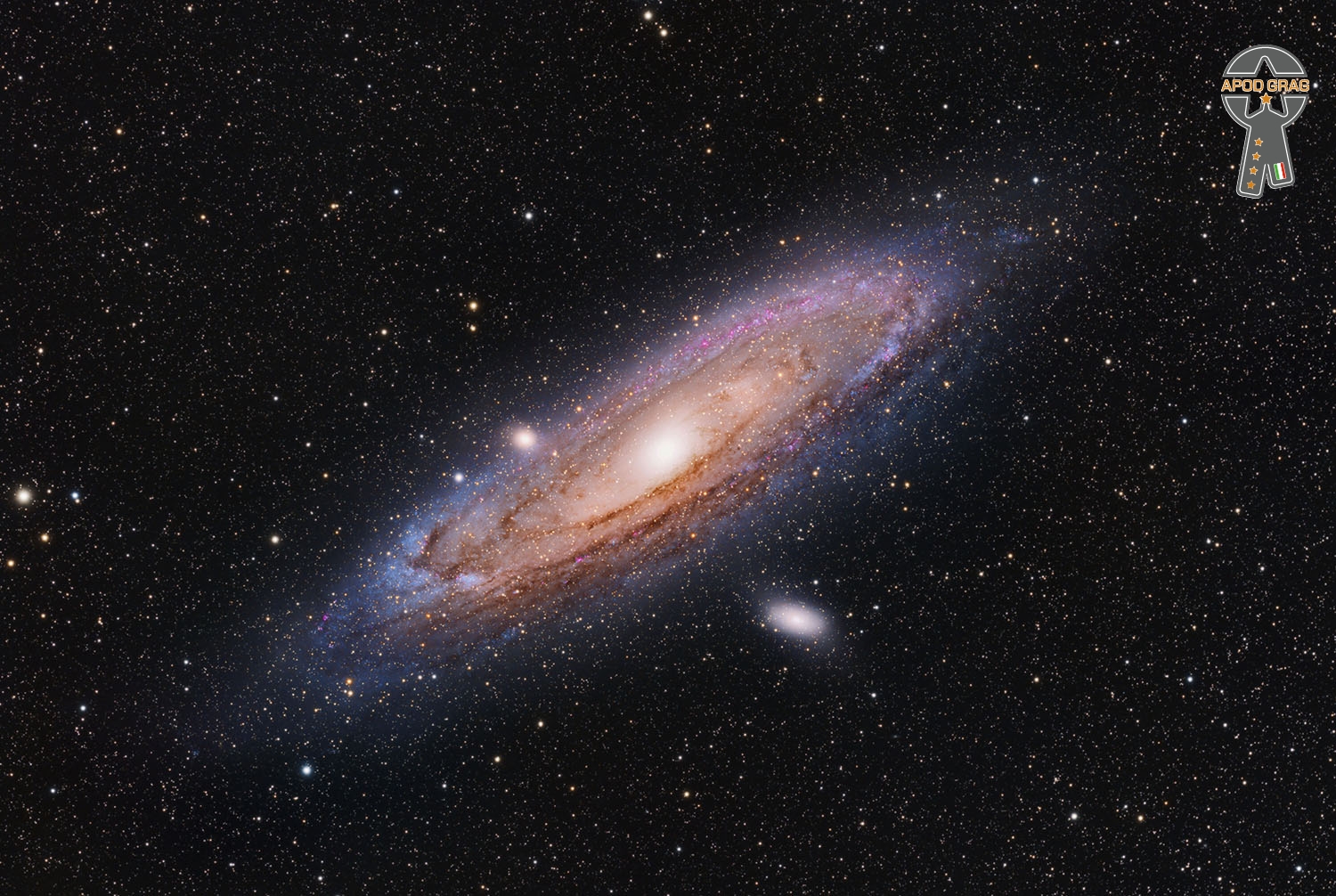The Cosmos with M31/32/110
M31, the great Andromeda Galaxy, is one of the most famous objects in the entire sky, and the nearest of all spiral galaxies. This object is first mentioned by the Persian astronomer Al Sufi in the 10th Century, but the world becomes aware of its existence only in 1764, when Charles Messier includes it in his catalogue. Messier has also made a drawing showing M31 and its companions M32 and M110.
On clear nights M31 can be seen with the naked eye as a hazy smudge, and binoculars show its elliptical shape that can be traced to its full extent of over two degrees. That is four times the width of the full Moon! The Andromeda Galaxy (IPA: /ænˈdrɒmɪdə/), also known as Messier 31, M31, or NGC 224 and originally the Andromeda Nebula (see below), is a barred spiral galaxy approximately 2.5 million light-years (770 kiloparsecs) from Earth and the nearest large galaxy to the Milky Way. The galaxy’s name stems from the area of Earth’s sky in which it appears, the constellation of Andromeda, which itself is named after the Ethiopian (or Phoenician) princess who was the wife of Perseus in Greek mythology.
